#electric vehicle charge
Explore tagged Tumblr posts
Text
Why London Homeowners Should Invest In EV Charger Installation
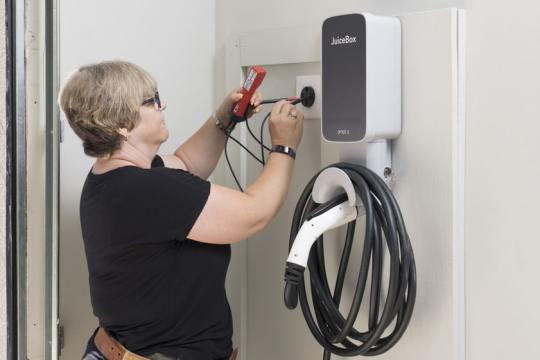
Many homeowners are starting to understand the importance of setting up an EV charger at home as electric vehicles (EVs) become increasingly popular on London's streets. In addition to being convenient, it also offers long-term financial benefits, supports a more environmentally friendly way of living, and even increases the value of your home. Here are some reasons why an EV charger installation in London is a wise and beneficial investment if you live in London and are thinking about switching to an electric car.
1. The Convenience Of Charging At Home
The most important advantage of having an EV charger installed at home is the convenience it offers. Public charging points around London are hard to find, especially during peak times when demand is high. You may even have to wait in line for a charger to become available.
You can avoid the hassle of dealing with it. You simply charge your car up at home; you're good to go by the following day. It does not mean planning for where to get and where not since sometimes the public charging stations might have some charges free while others won't. This convenience has become more beneficial to the busy people of London who need a bit of spare time for their activities.
2. Cost Savings Over Time
At first, putting in an EV charger at your house might look like a big expense, but you'll save a lot of cash over time. The cost of charging an electric car at home is far less expensive. The cost of electricity is considerably lower than that of gas and diesel. Additionally, some electricity providers offer EV users exclusive discounts, which can reduce the cost of charging.
3. Supporting The Environment
Another good reason to have an EV charger at home is that it's good for the environment. Charging your car at home goes a step further. When you rely on public charging stations, you don't always have control over the energy source that powers your vehicle.
By putting in a home charger, you can pick an energy supplier that uses clean sources like wind or solar power. This can help you reduce your carbon footprint more.
Types Of EV Chargers For Homes
There are two main types of EV chargers: AC (alternating current) chargers and DC (direct current) chargers. Each type has its advantages, and the one you choose will depend on your specific needs.
AC chargers: AC chargers are the most widely used type of EV charger for home installations. They may be slower than DC chargers, but this makes them ideal for overnight charging at home. Most people can find that it is enough to get their car fully charged with an AC charger overnight since they will need to use it the next day.
DC chargers: DC chargers are generally faster than AC chargers. However, these chargers are relatively more primarily costly when installed in public places. While fast charging is handy in professional environments, having a DC charger at home may not be necessary for most EV owners.
For those who want to define the difference between these two chargers and how to select the correct one, various resources are available, including the in-depth guide on EV charger types and installation.
The Benefits Of Installing An EV Charger At Home
While convenience and cost savings are the most obvious benefits, there are other advantages to installing an EV charger in your home. Here are a few key ones:
1. No Need To Hunt For Charging Stations
Finding a public charging station in London can be time-consuming. With a home EV charger, you'll always have a reliable place to charge your car at your doorstep.
2. Increased Property Value
As the demand for electric vehicles increases, homes with EV chargers become more attractive to potential buyers. Installing a charger can increase the resale value of your property, mainly as more people switch to electric cars.
3. Customisation
Every home is different, and so are the charging needs of each homeowner. Installing an EV charger at home can be tailored to suit your vehicle and your daily routine. Whether you need a fast charger or a more standard one, the options are flexible.
4. Tax Incentives
Aside from the grants available for installation, there are often other tax benefits available to homeowners who install EV chargers. These incentives can help make the upfront costs more manageable.
5. Public Charging Challenges In London
Public charging points in London can sometimes be unreliable. High demand means that chargers are often used, and you may have to wait for a spot to open up. Additionally, some public chargers may not work correctly, leaving you with limited options when charging your vehicle.
The Installation Process
Installing an EV charger at home is simple. However, working with certified professionals ensures that everything is set up correctly. Here is what you can expect during the installation:
Site assessment: A qualified installer will evaluate your property's electrical system to choose the best place for the charger.
Charger selection: You'll choose the charger that best suits your car and daily needs.
Installation: The installation team will set up the charger, ensuring it meets all safety requirements.
Testing: Once installed, the charger will be tested to ensure it works correctly, and you'll be given instructions on how to use it.
Conclusion
Installing an EV charger is the smartest thing you can do right now. It provides ease of convenience and saves money and the environment. It also raises the value of your property. The UK will eventually be urging for electric cars, so you should prepare to have electricity available at home. Accessing electricity means taking the first step in the right direction. With the added benefits of government subsidies and the possibility of long-term savings, there has never been a better time to invest in an EV charger for your home. If you are ready to go, it will be a sustainable, affordable, and efficient, convenient way to charge your EV. Now is the time to start exploring options.
#ev charger installation kent#electric vehicle charge#electric vehicles#electric charger installation
0 notes
Text
What is the most common way to charge an electric vehicle?
Electric vehicles (EVs) are becoming increasingly popular as people seek to reduce their carbon footprint and contribute to a more sustainable future.
One of the key considerations for EV owners is how to charge their vehicles.
There are several ways to charge an electric vehicle, but the most common method is using a dedicated charging station, either at home or in public.
youtube
Home Charging
The most convenient and cost-effective way to charge an electric vehicle is at home.
This requires installing a dedicated charging station, which can be done by a qualified electrician.
There are two types of home charging: level 1 and level 2.
Level 1 charging uses a standard household outlet and can provide up to 120 volts of power.
This is the slowest charging option, and it can take up to 24 hours to fully charge an EV battery.
Level 1 charging is suitable for those who have a low daily driving distance and ample time to charge their vehicle overnight.
Level 2 charging requires a dedicated 240-volt circuit and provides faster charging times than level 1.
A typical level 2 charging station can provide up to 30 miles of range per hour of charging, meaning a full charge can take around 4-8 hours.
Level 2 charging is suitable for those with a higher daily driving distance and who need to charge their vehicle more frequently.
Public Charging
Public charging stations are available in various locations as you can see at https://gocharge.tech, including shopping centers, parking garages, and roadside rest areas.
Public charging stations are often faster than home charging stations and can provide more significant amounts of power.

Public charging stations come in several types, including level 2 and DC fast charging.
DC fast charging is the fastest public charging option and can charge an electric vehicle up to 80% in just 30 minutes.
Level 2 public charging stations are slower than DC fast charging, but still faster than home charging.
One significant advantage of public charging is the convenience it provides.
EV owners can charge their vehicles while they go about their daily lives, rather than having to find a suitable time to charge their vehicles.
This can also be a benefit for those who are away from home and need to charge their vehicle during the day.
Other Types of Charging
Some manufacturers offer alternative charging options.
In-floor charging allows EV drivers to park their vehicles on a dedicated platform and use the vehicle’s own motor and inverter to charge their vehicles.
This eliminates the need for a separate charging station and can significantly reduce the cost of installing a dedicated charging station.
However, it is possible for an EV to overheat while charging on a platform, so it’s best to ensure the vehicle is properly insulated.
Another alternative charging option is wireless charging, such as the wireless charging pad from Sonnenbatterie.
In wireless charging, an electromagnetic field is used to transmit power through the air.

All the Charging Options
Although EV owners are limited in terms of the type of charging station they can use at home, they have plenty of options at public locations.
There is no “right” choice when it comes to the type of charging station you should use.
The amount of power provided by a charging station and your driving habits are the most important factors to consider when choosing a charging station.
To help determine your charging options, start by reviewing the relevant EV charging station specifications.
In addition to standard features, EV charging station specifications will show which type of power they provide.
Some charging stations are designed to be compatible with different types of vehicles, such as plug-in hybrid vehicles (PHEVs).
After examining the specifications of your charging station, there are several things to consider when choosing your charging station.
The first consideration is your power needs.
Power Options
Many people initially think about how much power they need when purchasing an EV, but it’s also important to think about how much power your charging station can provide.
0 notes
Text
Electric buses and electric trains electric buses and electric train’s electric buses and electric trains eleCTRIC BUSES AND ELECTRIC TRAINS ELECTRIC BUSES AND ELECTRIC TRAINS ELECTRIC BUSES AND ELECTRIC TRAINS ELECTRIC BUSES AND ELECTRIC TRAINS
ELECTRIC BUSES AND ELECTRIC TRAINS!!!!!!!!!!!!!!!!
#solarpunk#public transportation#bus#train#electric buses#electric train#electric vehicles#AND NOT ONLY ARE THEY ELECTRIC BUSES AND ELECTRIC TRAINS#BUT THEY ARE CHARGED THROUGH ELECTRICITY GAINED BY RENEWABLE ENERGY#BUT SERIOUSLY COME ON WE NEED MORE PUBLIC TRANSPORTATION#THAT IS NOT RUN ON FOSSIL FULES#YOU!#YEAH YOU!#GO SEE WHO YOU NEED TO TALK TO IN ORDER TO GET SOME OF THAT IN YOUR CITY#MAYBE CITY HALL
449 notes
·
View notes
Text

Nikola Tesla (July 10, 1856 - January 7, 1943)
Nikola Tesla registered more than 700 patents in 35 countries of the world, and many of those inventions brought progress and prosperity to mankind. However, Tesla, when he died in New York, was penniless.
Nikola Tesla 1st Electric Car in 1918 That Regenerate Electricity from the Earth.
This is Nikola Tesla's 1921 Pierce-Arrow electric car, powered by pure etheric electricity. It is a self-charging car; it does not run on batteries, oil, or gas.
Electric cars have been around much In 1931, Nikola Tesla presented and tested a new automobile that he had developed it with his own personal funds.
The motor had been removed, leaving the clutch, gearbox and transmission to the rear wheels uninterrupted. The power receiver (gravity energy converter) had been built by Tesla himself. It was installed in front of the control panel. A heavy antenna, approximately 1.8 meters long, protruded from the converter. This antenna apparently had the function as that of the moray converter (radiant energy!).
Mr Tesla said there was enough power in the converter to light an entire house, plus run the car's motor.
The car was tested for a week, reaching a top speed of 144 km per hour effortlessly...
#art#design#tesla#croatia#ingenieur#e-car#nikola tesla#gravity energy#antenna#radiant energy#electric cars#electric vehicles#1900s#pierce-arrow#self-charging#electric vehicle#inventor#serbia#pioneer
41 notes
·
View notes
Text
Chicago-area Tesla charging stations lined with "dead" electric cars in freezing cold. 🤔
#pay attention#educate yourselves#educate yourself#knowledge is power#reeducate yourself#reeducate yourselves#think about it#think for yourselves#think for yourself#do your homework#do some research#do your own research#ask yourself questions#question everything#electric vehicles#charging stations#news
143 notes
·
View notes
Text
As cold weather sweeps across the U.S., some electric vehicle owners are learning a bitter truth: Low temperatures can stop the cars dead in their icy tracks.
The issue crystallized this week when some Tesla owners in Chicago discovered their EVs' batteries had died in sub-zero temperatures. Drivers also said some of Tesla charging stations weren't working, or if they did work that the stations were taking longer than usual to charge up their vehicles.
“I've been here for over five hours at this point, and I still have not gotten to charge my car,” Tesla driver Brandon Welbourne told CBS Chicago. “A charge that should take 45 minutes is taking two hours.”
What happens to electric vehicles in cold weather?
Here's what to know.
Electric vehicles are less efficient in cold weather, with Recurrent's research finding that below-freezing temperatures reduced driving range up to 30% on 18 popular EV models.
An EV with a 200 to 215 mile range may only go 150 to 175 miles in the cold, Recurrent's Case said, while noting even that reduced mileage is often sufficient for most drivers. “The average person with an EV drives 30 miles a day,” he said.
Still, a shorter range in cold weather could be an issue for some owners if their EV runs out of juice miles earlier than expected, potentially leaving to hunt for an available charger or, worse, stranded in dangerously frigid conditions.
(continue reading) ❄️ 🚗 🥶
#tesla#elon musk#electric vehicles#yikes#as much as i hate those stupid soap bubble looking cars its not just tesla#yeah this might be a prob#lol i think i can wait a bit longer for my ev#i frequently drive to georgia and north carolina and nyc and dc#i couldnt imagine getting stranded on the side of the road in freezing temps#because my charge died about 30% sooner than i planned#and charging stations are so few and far between to begin with#im not knocking the technology but issa problem#❄️ 🚗 🥶
102 notes
·
View notes
Text
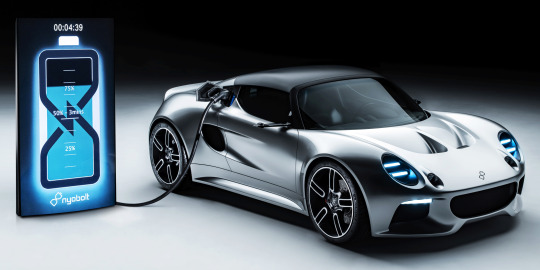
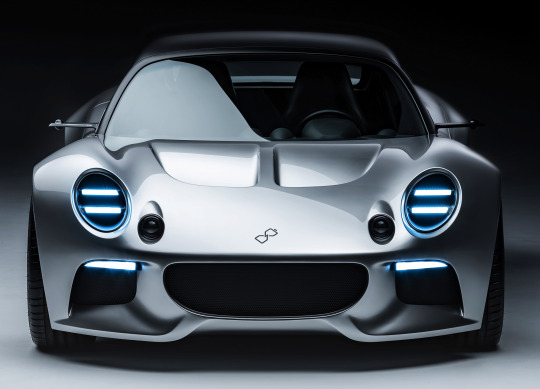

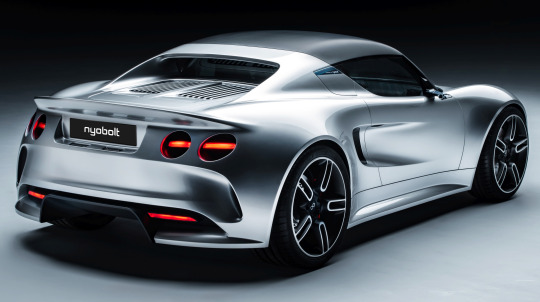
Nyobolt EV Concept, 2023. An electric sports car prototype designed by Julian Thomson based on the first generation Lotus Elise engineered by Callum with battery tech by Nyobolt that has a claimed charge time of 6 minutes. Nyobolt has revealed new battery technology that is smaller, lighter and faster to charge. In the Nyobolt EV, set to weigh close to one tonne, this translates into a 35kWh battery that is capable of fully charging in 6 minutes with existing charging infrastructure, delivering a range of up to 250km. Nyobolt claims that its battery will enter production in early 2024 and is “ready to be adopted” across the automotive industry.
#Nyobolt#Nyobolt EV Concept#Nyobolt EV#Julian Thomson#Lotus Elise#electric sports car#EV#concept#prototype#fast charging#design study#experimental car#test vehicle
140 notes
·
View notes
Text

#meme#memes#dank memes#funny memes#savage#electric cars#cars#ev#electric vehicle#free gas#electricity#petty#bruh#dick move#charging
10 notes
·
View notes
Text
Charging stations are failing to keep up with the EV boom. (Washington Post)

For the past few years, electric vehicles have flooded onto America’s roads: Tesla Model 3s, Hyundai Ioniq 5s, even the occasional electric Hummer. In 2023, automakers sold almost 1.2 million all-electric cars to U.S. consumers, accounting for over 7 percent of total new car sales and a new national record.
But all those cars also need a place to plug in. And while the country is also expanding public charging, data show that EV sales are far outpacing growth in the U.S. charging network — endangering the transition to electric cars just as it’s starting to take off.
Between 2016 and 2023, EV registrations in the United States grew almost three times faster than the United States’ public charging infrastructure. In 2016, there wereseven electric cars for each public charging point; today, there’s more than 20 electric cars per charger.
“You often hear about the chicken and the egg question between chargers and electric vehicles,” said Corey Cantor, senior associate for electric vehicles at BloombergNEF, an energy research organization. “But overall the U.S. needs more public charging.”
11 notes
·
View notes
Text

If I'm not home I'm often someplace like this as per EV motto ABC (Always Be Charging).
#EV#electric vehicles#vehicle charging station#supercharger#FLO#vancouver#local#photographers on tumblr#original photography blog#public charging
21 notes
·
View notes
Text
Ilana Berger at MMFA:
In a new analysis of electric vehicle-related content on Facebook, Media Matters found that negative stories made up the vast majority of content, particularly on right-leaning and politically nonaligned U.S. news and political pages, a trend which does not align with the optimistic outlook of EV adoption and technological advancements. Since 2021, the Biden administration has allocated billions of dollars toward meeting the ambitious goal of making half of all new cars sold electric or hybrid over the next few years. Provisions in the Inflation Reduction Act, the Infrastructure Investment and Jobs Act and the CHIPS Act have provided tax credits and other incentives to jump start electric vehicle sales and infrastructure such as charging stations, domestic battery manufacturing, critical mineral acquisition, in addition to preparing the automotive industry workforce for the transition.
In March, an Environmental Protection Agency rule setting strict limits on pollution from new gas-powered cars primed automakers for success in meeting these goals. Biden’s EV push will continue to play an important role in the upcoming presidential election. Former president and current GOP candidate Donald Trump has insisted that Biden’s policies benefit China, which makes up the largest share of the global EV market. In March, while talking about the current state of the auto industry, Trump declared, “If I don’t get elected, it’s going to be a bloodbath for the whole — that’s going to be the least of it. It’s going to be a bloodbath for the country.” Economists disagree.
The comment tracks with years of outrage and opposition from Republican politicians, right-wing media, and fossil fuel industry surrogates, who have often disparaged the new technology and related policy and misleadingly framed the EV push as a threat to American jobs and national security. Constant attacks on EVs from the right have helped fuel a politically divided market, where people who identify as Democrats are now much more likely to buy them or consider buying them, while nearly 70% of Republican respondents to a recent poll said they “would not buy” an EV. So far in 2024, headline after headline announced EV sales slumps and proclaimed that “EV euphoria is dead,'' despite reports of “robust” growth. In February, CNN changed a headline about EV sales on its website from a success story to a failure. Despite the positive long term outlook for EVs based on indicators like sales and government investments, the discourse around electric vehicles is often pessimistic.
[...] Right-wing media have been driving anti-EV sentiment (with help from fossil fuel industry allies) since the start of Biden’s term. This trend was clearly reflected in Media Matters’ analysis. Out of the top 100 posts related to EVs on right-leaning pages, 95% were negative, earning over a million interactions in 2024 so far. But on Facebook, politically nonaligned pages fed into this trend as well. Nearly three quarters (74%) of EV related top posts on nonaligned pages had a negative framing. These posts generated 83% of all interactions on EV-related top posts from nonaligned pages.
On non-aligned and right-wing Facebook pages, anti-electric vehicle content-- likely fueled by a mix of climate crisis denial and culture war resentments-- draws lots of reliable engagement, in contrast to the reality of increased EV adoption in recent years.
#Electric Vehicles#Culture Wars#Automobiles#Climate Change#Facebook#CHIPS Act#Inflation Reduction Act#Infrastructure Investment and Jobs Act#Biden Administration#Joe Biden#EV Charging Stations
9 notes
·
View notes
Text
The Benefits Of Installing EV Chargers At Home In London
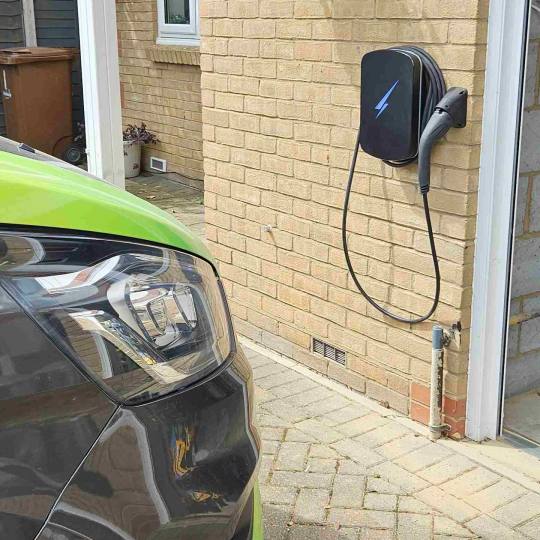
As electric vehicles are getting so much momentum, the people of London must have an easy-to-use and efficient charging solution at their homes. Home EV chargers enable you to charge your vehicle whenever possible without relying on public charging stations.
For anybody living in a busy city like London, where convenience is at a premium, the advantages of installing an EV charger at home are undoubtedly unbeatable. Here is a detailed explanation of the benefits of home EV charger installation in London:
Convenience And Time-Saving
With home EV chargers, it is not a matter of wasting your time searching for available public charging stations or standing in a long queue; you can charge your EV overnight and have it ready to be used anytime you wish.
It saves much time for busy professionals or families in London. You save time on an inevitable delay resulting from the uncertain availability of London EV charging points.
Cost Effectiveness
Public charging stations charge much more, and in the case of peak hours, they are much worse. The ability to use off-peak electricity makes using a home EV charger a money-saving proposition, considering what it can save on charges.
Besides, many government incentives and grants may also help reduce the initial cost of installing an EV charger in London, which is much more savvy.
Increased Property Value
Homes equipped with home EV chargers will eventually be in high demand from interested buyers as demand for electric vehicles rises. An EV charger may enhance your property's resale value because it will surely attract a green-conscious individual or a family looking to purchase an electric vehicle someday. This extra feature will distinguish your property in a competitive real estate market like London.
Environmental Benefits
Another good reason you should switch to electric vehicles would be the reduction of carbon emissions and, consequently, sustainability. You can further minimise the carbon footprint by powering your car with green energy from something as simple as solar panels by installing home EV chargers.
Optional Customisation
If you decide on EV charger installation in London, you can choose a model according to your specific requirements and preferences. There are two main types of EV chargers:
AC chargers are best for most residential usage and price.
D.C. Chargers are fast-charging and costlier, primarily used for heavy applications.
Learn more about the various EV chargers and how to select an appropriate one for your home by discussing it with reputable installers.
Reliable Charging Anytime
The public charging stations in London are not that reliable. Sometimes, they do improper maintenance, and overcrowding occurs. You can access constant and dependable charging if you install your EV charger. Therefore, choosing reliable EV charger installers in London is essential to ensure your charger will be installed correctly and work well.
Easy Maintenance
Your home EV charger can provide years of seamless performance with proper care. While maintenance requirements are minimal, following expert EV charger maintenance tips can help extend its lifespan and prevent unexpected issues. Some essential tips include:
Continued monitoring for signs of degradation in the cables and interconnections.
The charger should be clean and dry.
Schedule professional check-ups periodically to detect any potential problems early.
Compatibility With Intelligent Technology
Many modern home car chargers have innovative features comprising the following:
Scheduling charging during off-peak hours.
Compatibility with smart home systems.
These features make matters more convenient and enable you to maximise energy consumption, thus reducing costs.
Contribution To Energy Security
By having your charging solution, you're less reliant on external infrastructure, such as public or fuel stations. This independence ensures you're prepared for emergencies or situations where public options might be unavailable.
Installing an EV charger in homes supports the more significant objectives of creating a sustainable city. Transitioning to using electric cars that are charged using clean, renewable power sources will contribute toward reducing and creating a more friendly, greener environment.
Why Choose Reliable Electric Vehicle Chargers In London
Ensure your charger is installed correctly to be safe and efficient for extended use. Get the right installers in London from reliable EV charger companies for worry-free assurance of:
The installation can satisfy all local demands. Your charger is positioned to maximise convenience and functionality.
Ongoing support is always available for any future needs.
When searching for installers, look for companies with high reviews, certification, and transparent pricing to ensure quality.
Conclusion
Installing home EV chargers in a residential place in London will bring many benefits- from cost-cutting and convenience to environmental impact and property value boost. Many reasons could dictate your type of charger and the correct maintenance techniques so you will have hassle-free years of charging. If you're ready to embrace the future of transportation, contact reliable EV charger installers in London today to explore your options and take the first step toward a greener lifestyle.
1 note
·
View note
Text
Good news: I came up with an idea for a specific part of my fic.
Bad news: Apparently that's not actually how Tesla autopilot works.
Good news: It's fiction, I can either make Tesla autopilots the way I want them to be or make up an entirely new brand. And no, I'm not making them better. I'm making them worse in a way. So I'll probably make up a brand because I hate Tesla.
#i am about to write an electric vehicle that is so hijackable#but actually i wouldnt be surprised if something like this happened in the future#so you know how you can have a phone plan for things that arent phones ie smart watches?#phone plan for your car so you pay separately but can link to your phone so you dont need multiple#numbers. then someone doesnt need the app & can just get in turn on autopilot set a location & chill#spoilery statement here but uh. very useful for anyone thats been kidnapped & doesnt know where she is & is trying to escape#she can set that location to wherever she'd like to go within the charge time. & she can make calls since it's a phone plan similarly to ho#apple & samsung watches can take calls without the phone being nearby#now the only thing she needs to do is escape the house#captive vibes
2 notes
·
View notes
Text
#EV Fast-Charging System Market#EV Fast-Charging System Industry#Automotive#EV Fast-Charging System Market Size#BIS Research#EV Fast-Charging System Market Report#Electric Vehicle Fast-Charging System Market#Electric Vehicle Fast-Charging System Industry
2 notes
·
View notes
Text
Electric vehicles are pretty cool.
Until you need to charge it and there isn't a station nearby.
Until the charging station nearby doesn't have the right plugs. (Like having the wrong charger for your phone, but instead it's a whole car.)
Until the charging station is broken.
Until the charging station is being used by someone else.
Until you forget to charge your car overnight.
Until the power goes out and you can't charge your car.
Until you have to drive in freezing temps without the heater because it immediately drops 10 miles off your range, and that 10 miles is what is making sure you get home.
I'm all for electric vehicles, but only if the infrastructure is there to make them practical.
#electric cars#electric vehicles#i'm using my brother's ev fiat and while it's a good little car it's too impractical#on a good day I've got 100 mile range#on a cold day I've got 60 miles#even less with the heater#my dad unplugged the charger yesterday to charge his power tools and forgot to plug my car back in#i couldn't get to work this morning and needed a ride#there are too many things that could go wrong and have gone wrong in just a week#i need a gas car#im in a podunk place with no ev infrastructure
5 notes
·
View notes
Text
Top 5 Automotive Companies and How Metalman Auto Ltd. Supports Them
The automotive industry is dominated by several key players that lead the market in terms of innovation, production, and market share. The top five automotive companies globally are typically considered to be Toyota, Volkswagen Group, Daimler AG (Mercedes-Benz), Ford Motor Company, and General Motors (GM).

How Metalman Auto Ltd. Supports These Automotive Giants
As a leading supplier of high-quality automotive components, Metalman Auto Ltd. is well-positioned to support these top automotive companies. Our expertise in metal fabrication and assembly allows us to provide critical components that meet the specific needs of these manufacturers.
Our Value Proposition:
High-Precision Components: We provide parts that are essential for the safety and performance of vehicles, adhering to the exact specifications required by these top manufacturers.
Collaborative Approach: We work closely with OEMs to understand their needs and provide innovative solutions that enhance vehicle performance and safety.
Sustainable Manufacturing: Our commitment to sustainable practices ensures we contribute positively to the automotive industry’s environmental goals.
By partnering with Metalman Auto, these top automotive companies can enhance their supply chain efficiency and maintain their competitive edge in the global market.
#EV components supplier#Electric car parts manufacturer#Battery components supplier for EVs#Electric vehicle drivetrain parts supplier#EV charging components manufacturer#Electric motor parts supplier#EV battery management system supplier#Electric scooter parts manufacturer#general motors#vintage automobiles#chevrolet#Volkswagen Group#automotive industry#automotive#automotive components#metal fabrication#oems#oemparts#oem manufacturing#oem#metal parts supplier#India automotive components manufacturer#Automobile parts production in India#OEM parts manufacturing in India#Indian automotive parts supplier#Vehicle parts manufacturing industry in India#Made in India automotive components#Indian car parts production#India-based automotive parts manufacturer"
2 notes
·
View notes